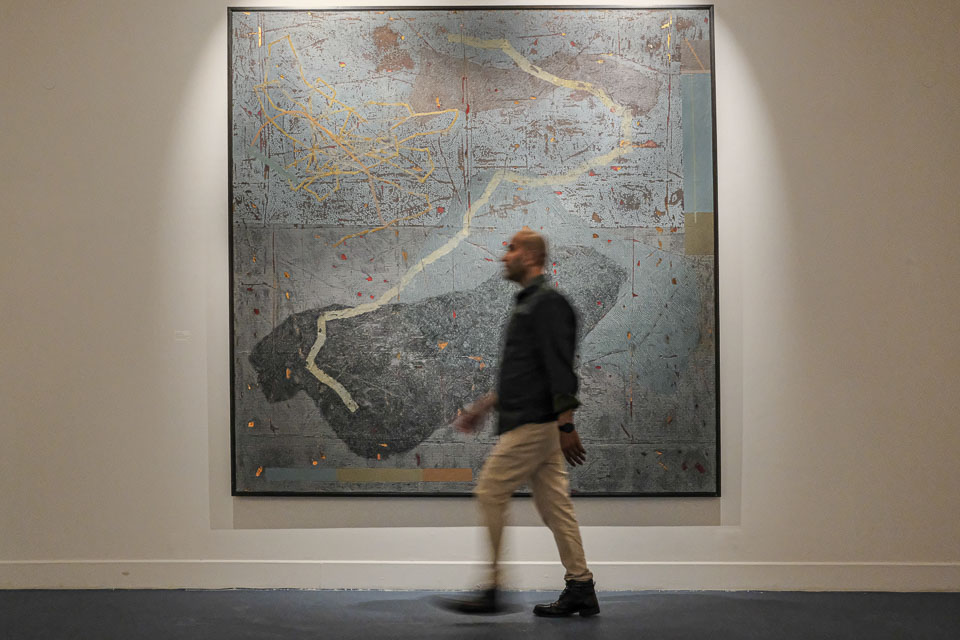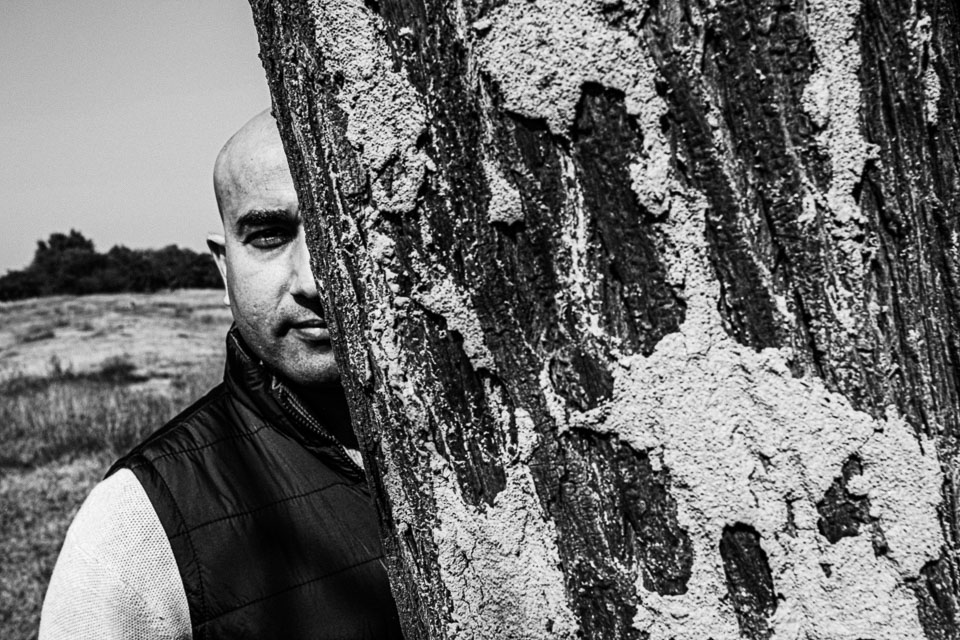Abhijit Pathak has built a strong presence in contemporary art through large-scale mixed media compositions. His works balance depth and restraint, integrating materials such as charcoal, pigments, paper, textiles, wood, sand, and metal. Drawing from personal experiences and cultural surroundings, Pathak constructs a visual language shaped by landscapes, people, and architecture. This essay explores the varied influences that shape his creative process, including his rural upbringing, historical structures, and Indian classical music.
Pathak’s journey begins in rural Bihar, where early impressions of his surroundings shaped his artistic perspective. The fusion of tradition and evolving landscapes instilled in him a sensitivity to cultural shifts. His works encourage viewers to explore the relationship between identity and environment, illustrating how formative years shape artistic expression.
Historical structures hold a central place in his practice, serving as living archives of human experience. Monolithic caves and ancient sites act as conduits for dialogue between past and present. By weaving these elements into his compositions, he fosters reflection on continuity across generations and the enduring presence of shared heritage. His engagement with history fosters curiosity, expanding perceptions of time and space.
Pathak’s approach to materials reflects this engagement with history. His method involves combining traditional and contemporary elements, creating a layered aesthetic that embodies shifts in culture and language. These choices result in intricate surfaces that encourage closer examination, revealing the evolution of human expression through materiality.

Beyond visual composition, his work engages with sound, particularly Indian classical music. He incorporates rhythm, tonal shifts, and emotive resonance of musical structures, bringing a sensory depth to his art. This interplay between sound and image creates an immersive experience, drawing connections between movement and stillness, presence and expression.
His artistic practice has evolved from two-dimensional surfaces to three-dimensional forms, allowing for deeper explorations of space and structure. Sculptural works introduce a tactile dimension, encouraging interaction through touch and movement. By extending into film and video, he broadens the sensory spectrum, integrating movement and audio to amplify his themes. This expansion demonstrates his adaptability and commitment to exploring new creative dimensions.
Abhijit Pathak’s art explores personal memory, cultural heritage, and historical inquiry. His compositions foster open-ended dialogues, inviting viewers to engage with multiple layers of meaning. Through abstraction, he constructs a space where history, material, and perception converge, offering an evolving exploration of identity and artistic vision.
Essay text updated.
